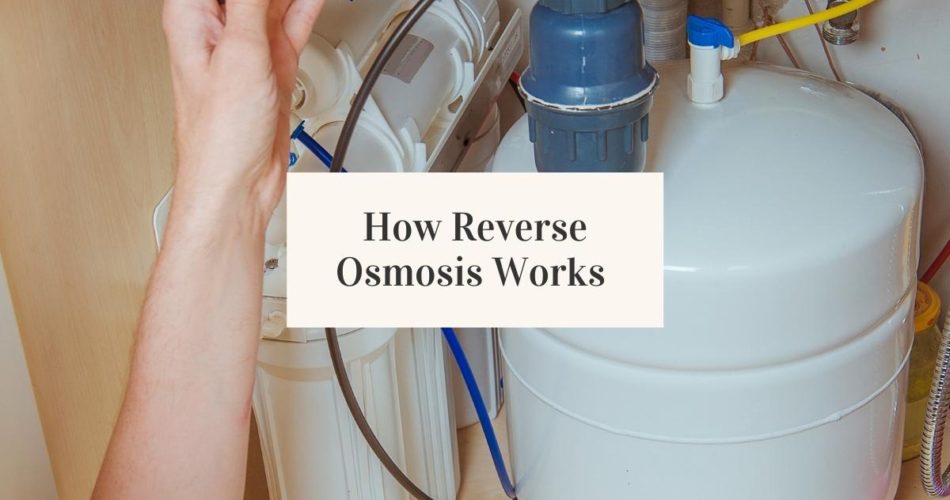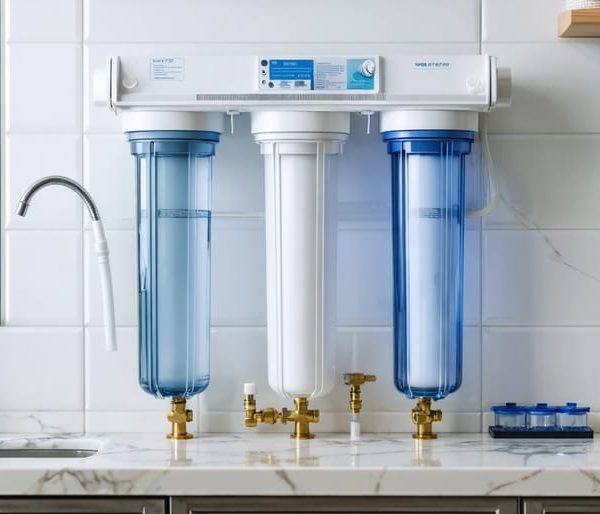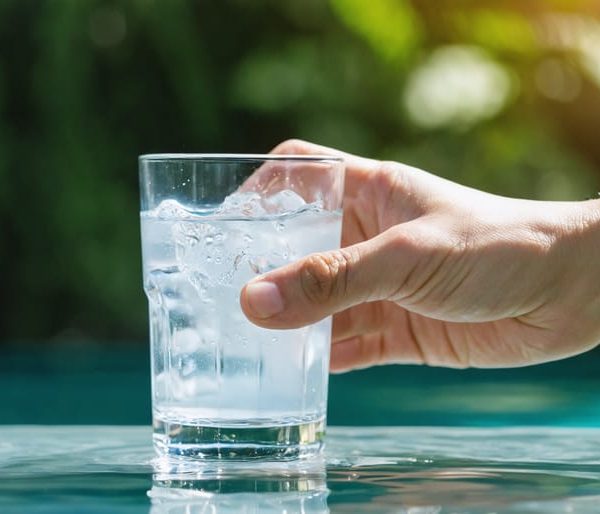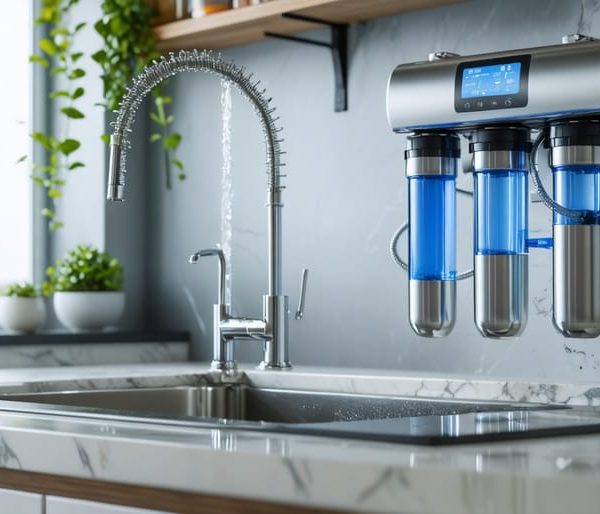Reverse osmosis filtration has a reputation for being one of the most effective ways to produce clean and good-tasting fresh water. Reverse osmosis systems have various applications. RO systems can be used as the whole house reverse osmosis systems, point-of-use (faucets) filtration, under-sink RO systems for restaurants, and even for aquariums.
The state of the feed water you want to filter doesn’t matter. The reverse osmosis water filtration system can filter it efficiently to give you clean drinking water. Before we will dive deeper into explaining how reverse osmosis works, we will need to talk about the basic idea of the reverse osmosis system.
The Reverse Osmosis System
The reverse osmosis process removes impurities or contaminants from your water supply by applying extreme pressure to force water through a semi-permeable membrane. The external pressure applicable here is greater than the natural osmotic pressure, hence the name “reverse osmosis (RO)” process. RO filters use high-pressure pumps to generate this pressure.
In reverse osmosis systems, water moves from an area of highly concentrated solution (before the reverse osmosis membrane) to the area of lower concentrated solution (after the reverse osmosis membrane) to supply reverse osmosis drinking water.
The water that comes out through the semi-permeable membrane is the permeate. The remnant water from the reverse osmosis system is known as waste (freshwater) or brine (saltwater).
A reverse osmosis membrane has very tiny pores, enabling it to fend off the smallest contaminants.

So anything that’s not as small as water molecules won’t go through to the other side. This way, reverse osmosis removes up to 98% of contaminants from your drinking water. This makes the reverse osmosis system a highly efficient water filtration system. It’s also an efficient desalination system because it can produce freshwater from saltwater.
How Reverse Osmosis Works
Depending on the reverse osmosis system, there are multiple filtration stages, which usually include a sediment pre-filter and a post-filter.

Using a sediment filter, reverse osmosis systems eliminate sediment (rust, dirt, and silt) and chlorine from your supply. Then they pressurize water through RO membranes to get rid of total dissolved solids. Once pure water passes through the membrane, it goes through a post-filter for a final filtration process to remove any remaining contaminants before it flows into a storage tank.
Reverse Osmosis Systems Filtration Stages
The reverse osmosis system is premised on the RO membrane as the main filter media, but it also incorporates other kinds of filtration. A reverse osmosis system can have up to 5 filtration stages, but the usual range is within 3-5 stages.
Aside from the sediment filter, post-filter, and membrane, the reverse osmosis system may house a carbon filter. Carbon filters are responsible for reducing volatile organic compounds, chlorine, and chemical contaminants that give your tap water an unpleasant smell or taste.
As indicated above, the first stage is usually prefiltration. The first filter may be a carbon filter or a pre-filter, which will eliminate bigger contaminants capable of damaging the membrane.
The next stage of filtration is the RO membrane. This membrane eliminates smaller contaminants. Water passing through the membrane continually goes into a storage tank until it fills it up, and then the filtration system stops operating.
For the final filtration stage, water leaves the storage tank when you turn on your tap and goes through post-filtration before it comes out as tap water in your home.
Reasons to Have a RO Storage Tank
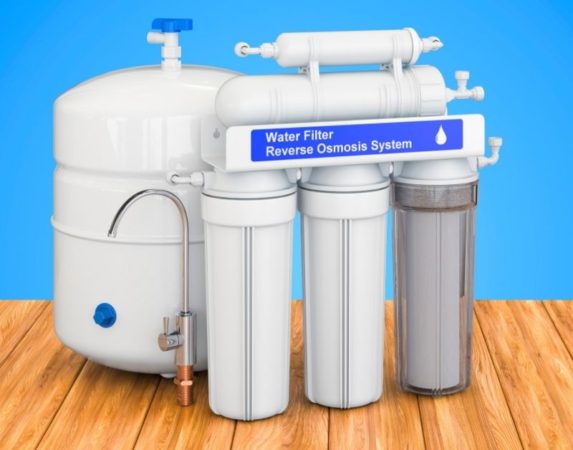
RO systems don’t typically come with a tank, but purchasing one is essential because it will store your filtered water giving you enough reverse osmosis water.
Another reason to own a storage tank is that RO systems are slow in producing reverse osmosis water. Reverse osmosis requires time. It can take RO systems 60 seconds to supply at least 2 ounces of reverse osmosis water. That’s a very slow flow rate.
To translate this to a household application, the speed of reverse osmosis filtration systems will take a minimum of 5 minutes to fill a single glass of reverse osmosis water. However, with a storage tank, your glass will fill as soon as you turn on your tap.
What Does Reverse Osmosis Remove?
The reverse osmosis system eliminates many contaminants such as fluoride, arsenic, and so many others through its semi-permeable membrane surface. In addition, the RO system can remove other contaminants because it comprises other types of filters.
One of them, the carbon filter, can also remove a wide range of contaminants from your drinking water. The carbon filter in your RO system eliminates foul taste, chlorine, and odors. As mentioned earlier, the sediment filter removes larger contaminants such as debris and dirt.
Microbes such as bacteria and viruses cannot be treated from your drinking water by the reverse osmosis system. Instead, you’ll need to combine your RO system with a UV filter.
Why Should You Have an RO Unit in Your House?
The RO system is a very extensive filtration system. It’s capable of removing virtually all the dissolved solids in your water (this may include beneficial minerals). However, the water is healthier to drink than when it was untreated. Among drinking water systems, only a water distiller can lower TDS levels in drinking water, but it’s not as efficient as the RO system in removing dissolved solids.
Aside from filtering out harmful contaminants, foul odor and taste, and sodium from your water, installing and maintaining this system is easy. On the plus side, it’s more eco-friendly than consuming bottled water because there’s no plastic waste. You can also fit it under your kitchen sink. A lot of desalination plants and bottling plants use industrial reverse osmosis systems.
How Wasteful is the Reverse Osmosis System?
Unlike some whole-house systems, these water systems flush out wastewater/brine with contaminants from the higher concentration side. When water flows through the RO system, it breaks into two channels.
While one channel transports the pure solvent to a tank, the other channel transports the rejected minerals, contaminants, and salts to the drain. The RO system is quite a wasteful system because it wastes about 4 gallons of water for every single gallon it produces.
However, the wastewater from the reverse osmosis unit can have useful applications, so it’s not exactly perceived as waste. Still, considering the wastewater to filtered water ratio, minimizing the quantity of water that goes to the drain is essential.
How to Minimize Wastewater in the Reverse Osmosis System?
Buy an RO System With a Permeate Pump
If you already have an RO water filtration system that doesn’t include a permeate pump, you should get it included in your water system. This is the best way to increase the water efficiency of your system. Permeate pumps can reduce the quantity of wastewater that comes out of your system by as much as 80%.
This pump works by storing the rejected reverse osmosis water in a chamber and utilizing its energy as water pressure to push the permeate to the tank. As the wastewater accumulates in the chamber of the pump, the piston that uses its energy is activated.
Ensure your Reverse Osmosis System has an Automatic Shut-off Valve
Make sure you buy a system that can automatically shut off the movement of water to the drain immediately after the tank is filled up.
Use the Wastewater for Landscaping
You can also reduce wastewater in your water system by using the drain water for artificial lakes or landscaping. Although the wastewater has a significantly higher TDS level, it’s safe for use in your garden. We recommend getting an RO system that comes with both an automatic shut-off valve and a permeate pump.
Reverse Osmosis Water vs. Bottled Water
As mentioned earlier, the reverse osmosis unit can treat and manufacture bottled water. However, its production wastes even more water than the reverse osmosis filter. This is because it takes a lot of water just to manufacture one unit of bottled water.
Aside from the wastewater drained, producing the plastic bottle requires petroleum and water. Petroleum is also utilized for delivering processed water to retail stores. Water is also used to wash the delivery trucks, which means more water is used and wasted. On the other hand, the reverse osmosis system produces water of the same water quality as processed water, but the water quality comes at a lesser cost to the environment.
Another advantage the reverse osmosis system has is the production of unlimited pure drinking water. This eliminates the need to buy more water bottles at the store. You can pour RO water into metal bottles and refrigerate them if you want cold water. Alternatively, you can put RO water in ice machines or trays to get ice cubes.
Is Reverse Osmosis Water Good for Consumption?
Reverse osmosis drinking water is free of dissolved salts that are invisible to the naked eye yet capable of making you sick when you consume it. In addition, the purity of reverse osmosis drinking water makes it ideal for your kidneys. Although removing soluble salts from your water will also eliminate essential minerals, this doesn’t make reverse osmosis water unsafe for drinking.
Our bodies are mostly made of water, responsible for aiding organ functioning, lubricating joints, and hydrating the body system. These functions don’t require the input of essential minerals. You can get most of the mineral content you need from your food. To get sufficient mineral content, consume veggies and fruits.
Mineral content is alright to consume through water, but the maximum benchmark EPA recommends is 500 ppm. Anything beyond this makes your water unsuitable for human consumption.
Reverse Osmosis vs. Water Softener
Reverse osmosis works with a more extensive filtration than a water softener. An RO system eliminates water hardness alongside other contaminants from water. A softener, on the flip side, doesn’t remove contaminants. It just gets rid of water hardness minerals (calcium and magnesium). As the name implies, a water softener converts hard water to soft water, which is good for showering, cooking, and laundry.
Reverse osmosis water filtration also treats hard water, but using the RO system to treat water hardness beyond 7 grains per gallon reduces the durability of the membrane. This will require you to change your membrane more frequently than you should. The solution will be to install a softener before your RO system.
FAQs
Can I link my reverse osmosis system to an ice machine?
Yes, but you’ll need a ¼ inch tube to connect it from the under-sink reverse osmosis unit. You’ll also need to consider the pressure of the refrigerator. The pressure of the water supply you’ll get from the reverse osmosis system is roughly ⅔ of the incoming pressure from the waterline.
How durable is a reverse osmosis system?
A: This depends on the type of water you’re processing. Very hard water can shorten the lifespan of the RO membrane. However, the normal lifespan of the membrane ranges from 3 to 5 years. Regular servicing and frequent replacement of vital parts such as the ledge faucet and the tank can last a long time.
Does a RO system require electricity to function?
No, it doesn’t. It requires water pressure to operate. However, you may require electricity if you’re using an electric pressure pump. But a standard RO system doesn’t need electricity.
What makes the reverse osmosis system very popular?
Because it greatly improves the taste of your drinking water. It’s cost-effective, easy to install, and does not require heavy maintenance.
Is the RO system expensive?
This depends on the kind of reverse osmosis system you’re purchasing. A point of use RO filter ranges from $150-600. While a whole house RO filter is on the extreme end of expensive because it can cost as high as $15k or $20k. The cost depends on many factors such as manufacturer, type, size, etc.
